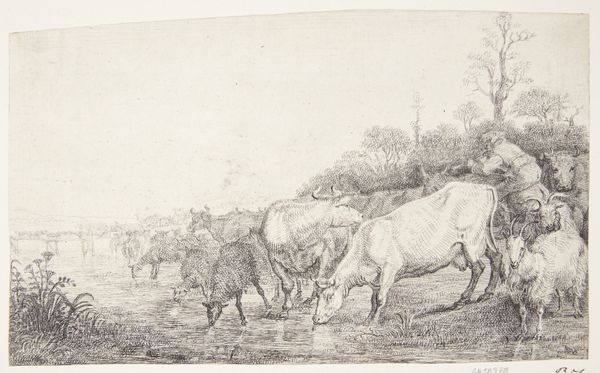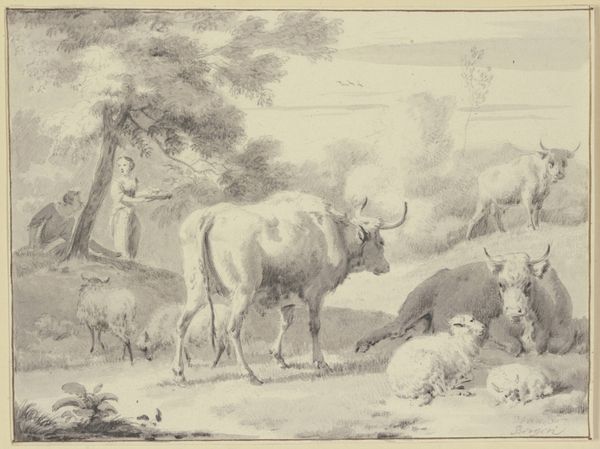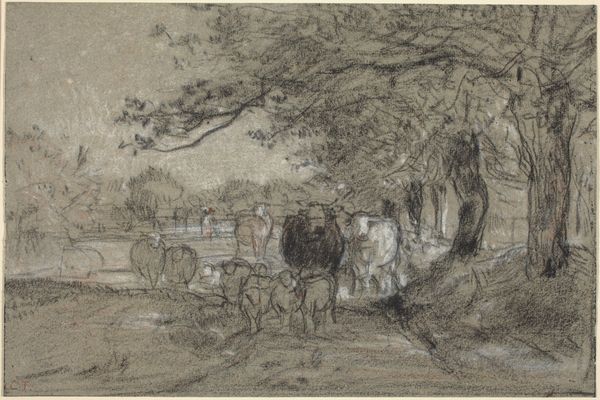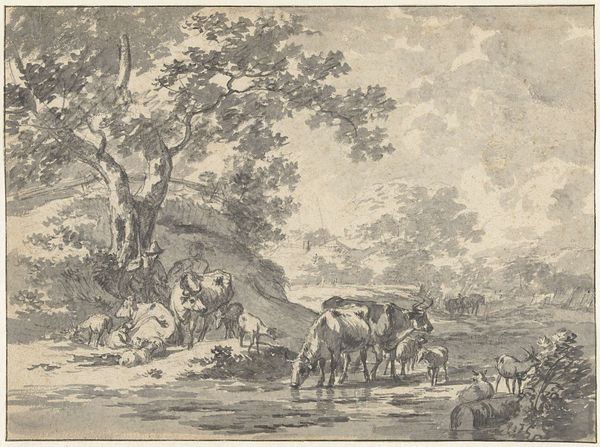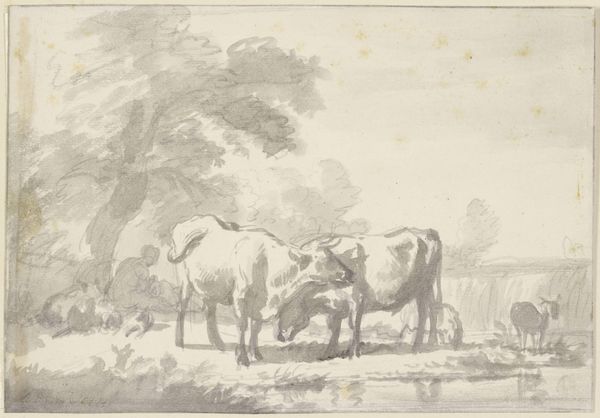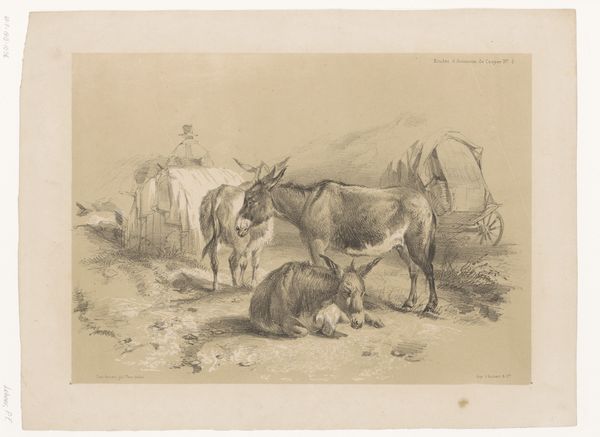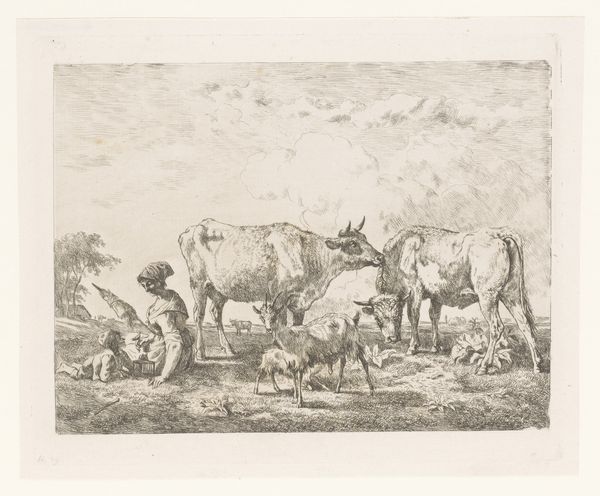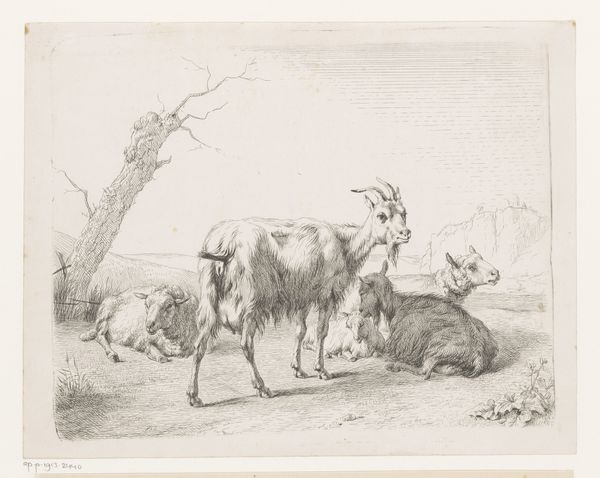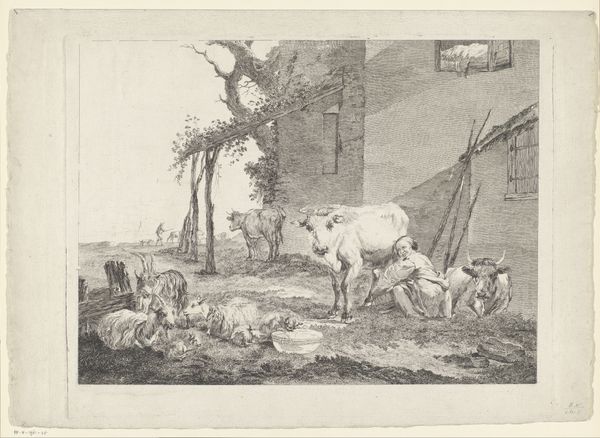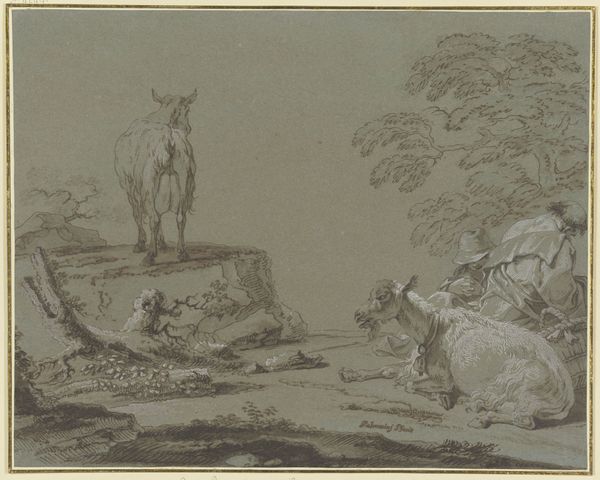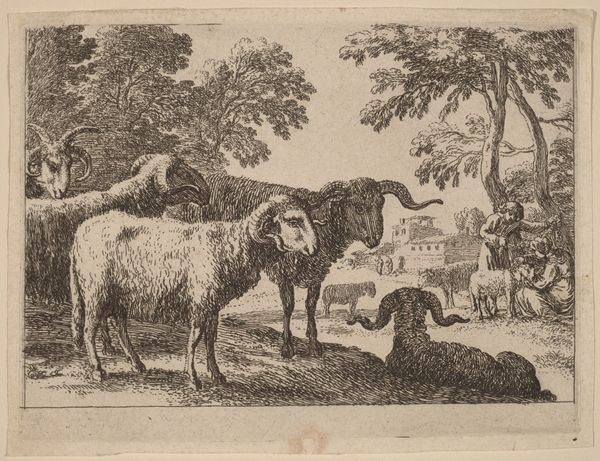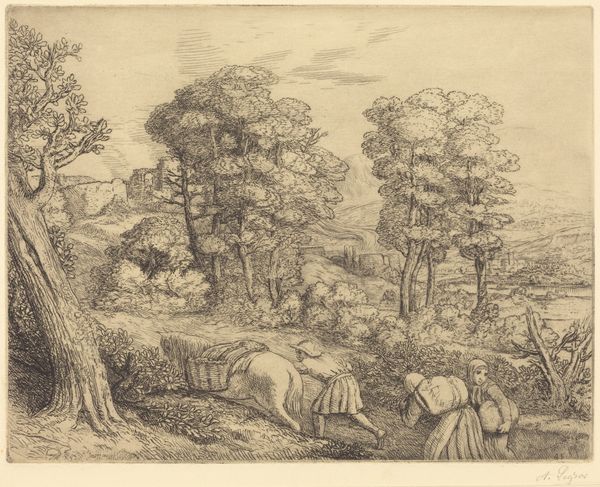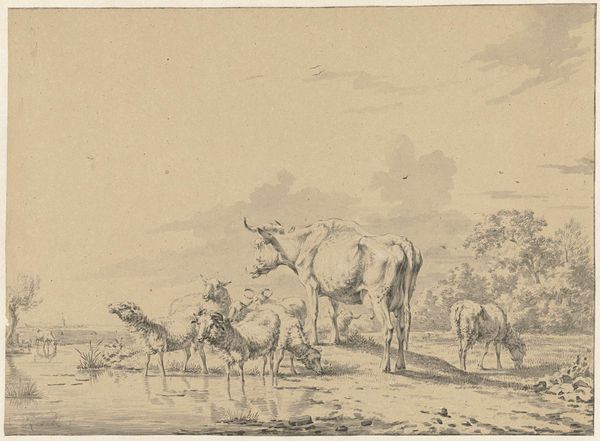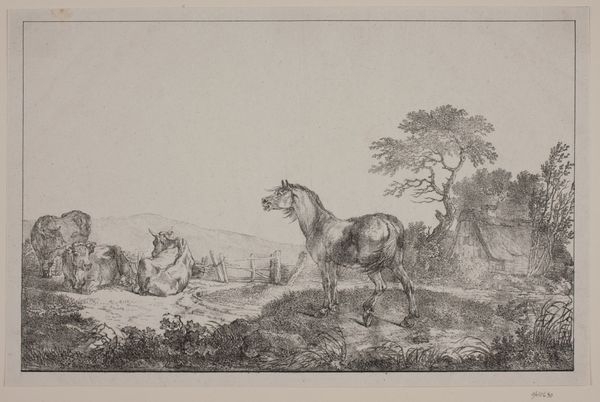
Dimensions: overall: 20.8 x 27.3 cm (8 3/16 x 10 3/4 in.)
Copyright: National Gallery of Art: CC0 1.0
Curator: Thomas Gainsborough, primarily known for his portraiture, also possessed a deep fascination with landscape. Here we see "Landscape with Cattle by a Cottage," a drawing from the late 1770s, rendered in pencil and charcoal. Editor: It’s incredibly evocative, almost dreamlike. The texture is rich, built up through layers of charcoal strokes. You can practically feel the rough wool of the cattle and the thatch of the cottage roof. Curator: The choice of medium is crucial. Pencil and charcoal were relatively accessible materials, placing this type of artwork within a broader social narrative that involved not only elite patrons but also emerging middle-class consumers of art. Gainsborough wasn't just painting pretty pictures; he was engaging in the shifting socio-economic landscape of art production and consumption. Editor: I'm drawn to the contrast between the smooth, almost smudged areas suggesting atmospheric perspective, and the scratchy, more defined lines that give form to the animals and foliage. It points to the artist’s active engagement with material and process; and the act of rubbing charcoal becomes crucial here. It's this materiality that bridges "high art" with craft, offering insight into the very labor of creation. Curator: Exactly, and it's not just about the technical process but about how those rural subjects, those 'cattle,' become figures in a romanticized ideal. We are witnessing the burgeoning romanticism movement, idealizing the countryside amid increased urbanization, although that idealization comes at the cost of representing actual labor of ordinary working people. The idyllic cottage hides the realities of agrarian life in the late 18th century. Editor: The quick strokes also suggest this wasn’t a finished work for public display but more likely a study, experimenting with techniques and light. Perhaps this was a preparatory sketch, one piece in the material journey towards the creation of a larger work or painting. Curator: Perhaps. Ultimately, examining a work like "Landscape with Cattle" invites us to think critically about the power structures inherent in representation. Editor: And to consider the unseen hours of labor in material gathering and applying process as they impact visual narratives, regardless of the historical position they may represent.
Comments
No comments
Be the first to comment and join the conversation on the ultimate creative platform.
